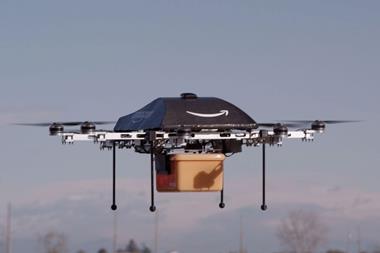To keep up with Amazon, many retailers have made knee-jerk moves into omnichannel retail at the cost of profit. Can data deliver both?
More channels means more customers, right? Not necessarily – if you can’t deliver on your brand promise and provide the same experience across all platforms, an omnichannel strategy may actually see you lose customers.
Amazon has created a seismic shift in retail, this we already know, but what retailers are now discovering is that their response to the threat has in reality set them back.
Entering into untapped markets adds significantly more challenges to an already complex process.
Retailers have been caught off guard, prompting knee-jerk reactions to omnichannel strategies. The digital age has led to a marked change in the way customers shop and retailers are having to adapt quicker than expected to survive.
Putting omnichannel before reputation
While many have shifted their strategies to one of delivering a premium customer experience on multiple channels, the reality is that they are breaking brand promises.
After investing so much in the commerce side of the shopping process, attention now needs to be turned towards the back end and supply chains.
“Retailers need to stop looking at data as an abstract object and look at it as an avenue to create marginal gains”
This is where the ability to meet customer demand is failing and retailers are getting the balance between customer experience and profit wrong.
Retail is complex because it works on probability rather than absolute. It’s like having to predict the outcome of a football tournament every day but for 30,000 SKUs.
To put that into perspective, after analysing all of the results and data for every recorded football game, our chief scientist Professor Dr Michael Feindt calculated the probability of each team winning based on 94 trillion different outcomes.
Retailers need to stop looking at data as an abstract object and look at it as an avenue to create marginal gains, which has always historically been impossible, until today.
Where retailers once relied on making decisions manually, there has always been a limit to the number of decisions they are able to make and the level of accuracy and efficiency. Automated decision-making based on predictions can reflect the brand in store on a daily basis.
Wake up and smell the data
Running on systems built for retail 20 years ago is simply not viable. Automation is high on the UK agenda as retailers are asking how they can do unique store-level planning and how they can achieve first-time-right delivery at scale?
Decisions can be made automatically to produce the best experience in store. This can be done daily without having to hire more people.
“The reactive approach to omnichannel strategy has led to profitability playing second fiddle to customer experience”
It’s totally undeliverable to do this manually. The level of detail needed is no longer possible.
The reactive approach to omnichannel strategy has led to profitability playing second fiddle to customer experience.
The retailer that is able to deliver the best omnichannel offering and get it right the quickest, will be the winner in the battle for the customer.
- Matt Hopkins is retail industry director at Blue Yonder


























No comments yet